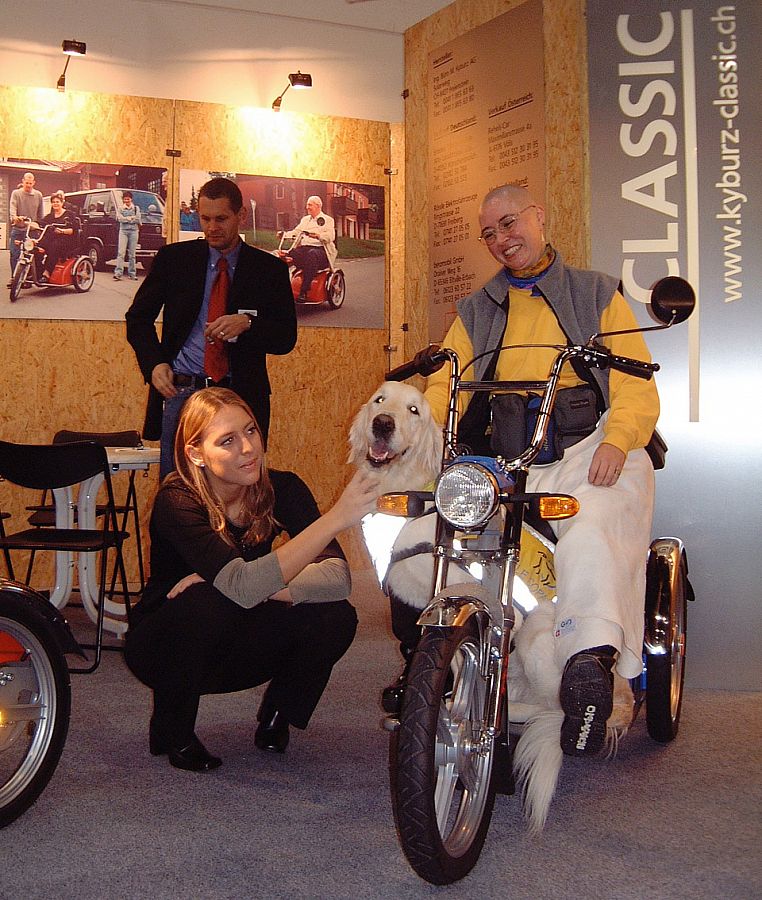Fair in Düsseldorf: I learn from my customers. The work inspires me!

For several years we have exhibited at the Rehacare trade fair in Düsseldorf, the largest trade fair for products in the rehabilitation sector. We have always presented our latest developments.
At one of the fairs, we met Detlef. He was our age. He had only one arm and no legs. He was born in the 1960s and was obviously one of the victims of Thalidomide. According to his statement, he did not receive a disability pension, so he had to earn his living by selling all sorts of trinkets and knick-knacks. In order to visit his potential customers during the fair, we lent him one of our CLASSIC vehicles. In return, he distributed our brochures. We became friends, and he soon became one of us. Apart from the fact that it was difficult for him to hold a pen and notebook in his hand, we soon found it quite normal to be with him at the fair. In the evening we went out together. As we did not have enough vehicles, Paul Hurter, called "Pauli the tub", and I sat together in one vehicle: our CLASSIC with roof. So we rode like this, Detlef sitting in his wheelchair, hooked up like a caravan. We drove quite fast. Pauli the bathtub'' and I talked intensely about what was going on at the fair, and it turned out that we didn't see a cable duct in the middle of our road. We drove over the shaft at such speed that we both hit our heads on the roof. Dear Detlef had seen it coming and unhooked himself, but with his one hand he could only operate one brake, after which he came to a stop spinning. While Paul and I rubbed our heads, Detlef laughed out loud: "Hahahahaaaa, how stupid can you be... ! Detlef hung on to our car again, and we continued on our way. Paul and I were still rubbing our heads. Detlef must have still been thinking about how stupid we were, in any case he overlooked a groove that crossed the course. He didn't manage to take the weight off his front wheels and then, bang, Detlef was lying on his stomach in the middle of the road. After the initial shock and the assurance that apart from a few scratches he had not suffered any serious injury, "Pauli the Bathtub" and I laughed out loud as Detlef picked up his glasses and pulled himself back into his wheelchair. "How can you be so careless?" we shouted in chorus.
Just then, a group of vendors, also from the fair, approached. What they saw: there was a disabled person who had only one arm and was sprawled on the ground and instead of helping him, he was being laughed at! These ladies and gentlemen were horrified and wanted to confront us. Only Detlef remained calm: he knew exactly why he had earned our laughter. We were unable to put past events into the balance. It was Detlef who calmed the group down and assured them that everything that had happened was part of a bigger plan and not what it seemed. Shaking their heads, the group continued on their way.
We all headed to the nearest bar and drank to what we had experienced together. Detlef felt that he really belonged. When a person is taken seriously, that they can give and also receive, even if or despite their disability, the gap between disabled and non-disabled is 100% bridged.
I learned:
- A situation, seen from different angles, can be interpreted differently.
- It is wonderful for both parties to bridge the gap between disabled and non-disabled people.
